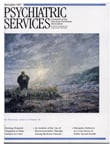Insight and Psychosis
Some books are memorable for the way in which they clarify a subject, assembling an array of seemingly unrelated facts into a coherent whole. Other books make their mark by unpacking the complexities of a topic that turns out to be more intricate then we had ever suspected. Insight and Psychosis falls in this latter group.
Every first-year psychiatric resident learns that the assessment of insight is an integral part of the mental status examination. "Insight and judgment intact" or "Patient lacks insight" are the mantras chanted during case presentations and inscribed in charts. But what precisely does it mean for insight to be "intact" or "lacking?" As Harold Sackeim demonstrates in his perceptive introduction to this book, we use the word, which in its plain meaning implies an ability to see inside one's self, in a multitude of ways.
Patients may be said to have insight if they acknowledge the presence of something abnormal about their functioning (for example, sleeplessness), if they define the disturbance as reflecting an underlying disorder (that is, as a symptom), or if they assign a medically correct name to the disorder itself (for instance, bipolar disorder). Any one of these possible indicators of insight may be present on its own, with the others nowhere in evidence. Thus a person might recognize that he has not slept for two days—an abnormal event for him—without attributing it to a disorder ("I'm just nervous before finals"). Another person may readily admit to being ill ("I have schizophrenia") though not acknowledge the abnormality of her delusional ideation ("My neighbor really does put ideas about sex into my head!"), much less link it with her diagnosis.
Nor does the complexity end there. Insight may also refer to a person's capacity to recognize the improbability of an idea, or to respond appropriately from an affective or behavioral perspective. Thus the patient who giggles as she talks about her mother's death may be said to lack insight, while another person who, though floridly delusional, continues to take his medication as prescribed may retain some aspect of insight.
These multiple ways in which the term is applied suggest that insight is not a unitary entity, the presence or absence of which can be ascertained in a single pass. Rather, as reflected in the most recent methods for measuring insight, including the separate efforts of the editors of this book, insight might better be conceptualized as a compound construct, composed of several distinct but related elements. Each element may be present or absent, or it may take an intermediate value on a spectrum that includes partial states of acknowledgment.
This multidimensional approach to insight reflects similar recent reformulations of approaches to delusions and decision-making incompetence. All three phenomena branch from the same limb of the tree of psychopathology. More broadly, this approach echoes a reinvigoration of a dimensional approach to psychopathology as a whole.
Why do some patients with psychotic disorders lack one or more elements of insight, while others retain insight? Older theories focused on the defensive functions of denial—the label we give to conditions in which insight is substantially impaired. Rather than confront the dreary reality of chronic schizophrenia, this argument goes, patients fall back on the comforts of their illusions.
More recent work has taken a neuropsychologic approach, analogizing the lack of insight in psychotic disorders to the denial and neglect syndromes often seen with injuries to the right hemisphere of the brain. Researchers talk about "failures of self-monitoring" associated with these impairments. Intriguing as these approaches are, it seems unlikely—even with the miracles of positron emission tomography and functional magnetic resonance imaging—that we will soon identify the precise fold of a gyrus where insight resides. The variegated nature of the phenomenon speaks strongly against its localization in a tight cluster of axons and dendrites.
Work on insight is being driven, in part, by the desire to harness its properties to advance the therapeutic cause. Insightful patients are more likely to comply with recommendations for treatment, as studies summarized in this book reveal, and, when hospitalization is required, to admit themselves voluntarily and at an earlier point on the road to decompensation. If insight could be measured more precisely, our ability to predict patients' subsequent cooperation with treatment would be augmented.
More important, if we could learn to modify patients' defects of insight, the currently mixed outcomes for many psychotic disorders might be significantly improved. Insight research to date has been descriptive rather than interventional, although one set of authors in this book reports the somewhat puzzling—albeit encouraging—finding that participation in psychosocial rehabilitation appears to improve insight, at least for some patients.
Insight and Psychosis draws together contributions from the realms of descriptive psychopathology, neuropsychology, and clinical psychiatry and psychology. Here and there a few odd chapters slip past the editors' own self-monitoring mechanisms: one on violence and mental disorder and a second on families' understanding of their relatives' disorders, neither of which relates directly to insight. Indeed, the latter actually addresses "outsight"—the recognition of disorder in others.
At a certain point in its development, a field is ripe for the kind of grand synthesis that shatters old paradigms and establishes new ones. The study of insight has not yet reached that stage. But the analytic approaches presented in this volume, cumulated over time, are the surest path toward the goal of convincingly explicating this complex and important phenomenon.
Dr. Appelbaum is chair of the department of psychiatry of the University of Massachusetts Medical School in Worcester.



